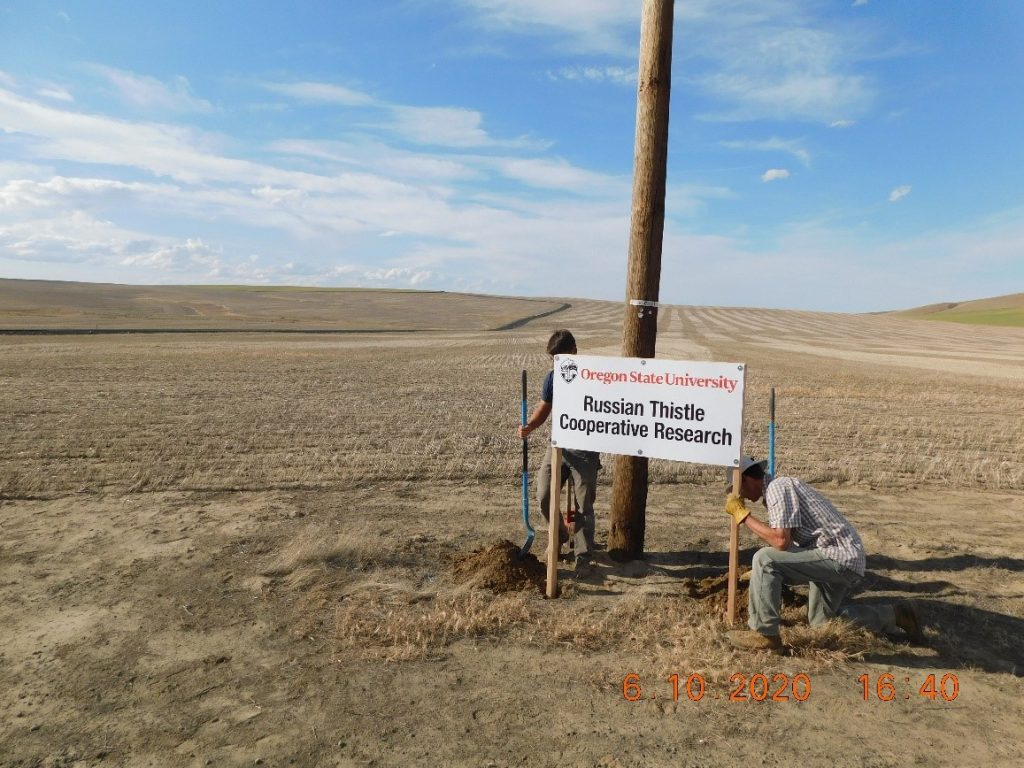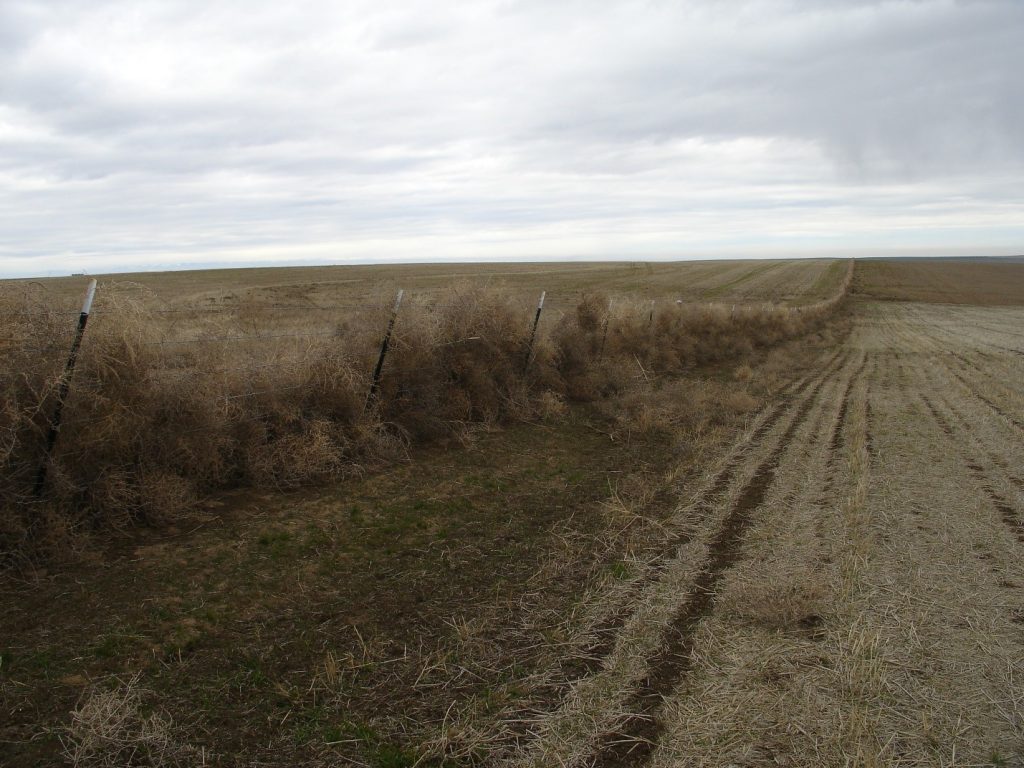As a follow-up to the last blog, where my colleague Aaron Esser compared weed control with the game of “Hide and Seek”, I would like to continue with the idea of “cheating” even further if you work with your neighbors and local weed control departments to improve not only weed resistant problems, but weed problems in general. If you do not have weeds, you won’t have herbicide-resistant ones, right?
The last statement would be true if weeds weren’t dispersed. However, if some of you are suffering with Russian thistle (Salsola tragus) problems, the most common tumbleweed in the semi-arid PNW region, you may have observed that even when you achieve a good control (not letting plants go to seed) one year, you still may have a similar problem in the following years. Recurrent Russian thistle infestations when you have had a good control the previous season/s can be due to the soil seedbank, if the weed species has long seed longevity in the soil, or to re-infestations from uncontrolled plants that tumble across your fields. In the case of Russian thistle, according to previous research (Burnside et al, 1996) which indicates a short longevity of Russian thistle seeds in the soil (99% only last one year), the second option could be the most probable.
If re-infestations are the main cause of having Russian thistle problems, wouldn’t it be helpful to work cooperatively to reduce the problem for the community and for yourself? A group of growers and scientists are working together to find out the answer to this question. Our hypothesis is that, although we know that working as a community is not as easy as working individually, the output might be totally worthy. We are evaluating the Russian thistle infestation in two cooperative areas of 5,000 ac each compared to similar control strategies in individual fields outside the cooperative areas. We expect that the cost of controlling Russian thistle inside these cooperative areas will be reduced during the years of study, while the control outside the cooperative areas will be stable or increased if the Russian thistle glyphosate-resistance spreads out in the region. Other synergistic effect from a cooperative management is the opportunity of finding best management practices for Russian thistle control by sharing information about treatments, application time, and other factors that can affect the control efficacy.
Kochia (Kochia scoparia), a weed that has been mentioned in previous blogs, could be another good candidate to improve its control with cooperative management. In several pictures, we can see how a single or a few plants can spread out thousands of seeds. For other species, such as jointed goatgrass (Aegilops cylindrica), downy brome (Bromus tectorum), or feral rye (Secale cereale), species that are locally dispersed for the most part, cooperative management may not be that effective.
We are trying to initiate more cooperative studies in Washington and Idaho to help preserve no-till farming with the increasing problem of herbicide resistance which leads us to two questions:
- Which weed species would be of your interest to see if cooperative management could improve the problem?
- Would you be willing to join or lead a cooperative weed management in your region if we prove it to be helpful?
In addition to cooperative management to improve weed control and alleviate herbicide-resistant weed problems, harvest weed seed control (HWSC) could be another practice to incorporate in your integrated weed control program. If you are interested in knowing more about HWSC in the region, please let me know. I will be happy to talk to you more about it.
 Photo 1: One of the cooperative areas to control Russian thistle (Photo courtesy of Judit Barroso, Oregon State University).
Photo 1: One of the cooperative areas to control Russian thistle (Photo courtesy of Judit Barroso, Oregon State University).
 Photo 2: Fallow field on the right with a heavy Russian thistle pressure from the left (west) field. We observed that a regular barb wire fence was not enough to stop Russian thistle (Photo courtesy of Judit Barroso, Oregon State University).
Photo 2: Fallow field on the right with a heavy Russian thistle pressure from the left (west) field. We observed that a regular barb wire fence was not enough to stop Russian thistle (Photo courtesy of Judit Barroso, Oregon State University).
Reference
Burnside OC, Wilson RG, Weisberg S, and Hubbard KG. Seed longevity of 41 weed species buried 17 years in eastern and western Nebraska. Weed Science 44:74-86. (1996).